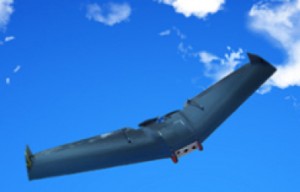 Earlier this year, the Federal Aviation Administration (FAA) fined Raphael Pirker $10,000 for flying a small Ritewing Zephyr, a remote controlled plane that retails for under $200. The fine was based on the careless or reckless operation of an “aircraft.” An administrative judge agreed with Pirker’s argument that his model plane was not an “aircraft” subject to the FAA’s rules, and dismissed the fine.
Earlier this year, the Federal Aviation Administration (FAA) fined Raphael Pirker $10,000 for flying a small Ritewing Zephyr, a remote controlled plane that retails for under $200. The fine was based on the careless or reckless operation of an “aircraft.” An administrative judge agreed with Pirker’s argument that his model plane was not an “aircraft” subject to the FAA’s rules, and dismissed the fine.
Now the National Transportation Safety Board has overruled the first judge and reinstated the fine. This means that model planes are considered a proper aircraft, and subject to FAA rules. And last month, the FAA released its new policy on drones, including using “administrative and legal enforcement action to gain compliance.”
In this article, Megan Ralstin explores the difference between toy planes and “unmanned aircraft systems,” and what this means for artists and photographers using drones.
Why Are the Rules for Drone Use in Such Disarray?
The FAA regulates all “aircraft,” which means anything “designed to navigate, or fly in, the air.” A paper airplane absentmindedly folded at your desk is therefore subject to federal law and FAA regulations.
Of course, the FAA realizes that things like small model airplanes shouldn’t be subject to the same regulations as actual airplanes. Instead, it has a set of recommended voluntary operating standards for model planes, such as not flying above 400 feet, not flying near airports, etc. And most local governments have further regulations about flying model aircraft. This scheme worked fine for quite a while, as the line between toy aircraft and actual aircraft seemed clear.
The proliferation of commercially available “drones” has muddied these waters. On one hand, the word conjures up images of weaponized unmanned aircraft conducting strikes in conflict zones. On the other, you have what are essentially still toys, like the little quadcopters used in this Cirque du Soleil video. There are many who use drones to take aerial shots for real estate listings and art festivals. With so many variations, the FAA needed to come up with a way to distinguish the drones that are more akin to model airplanes, from those drones that could pose threats to safety, security, and privacy.
The FAA first announced a policy regarding drones in 2007, making this distinction: to qualify as a “model aircraft,” and thus be exempt from the need for a special airworthiness certificate, the craft must be under 55 pounds and be operated “purely for recreational or hobby purposes.” This conversely means that anything flown for commercial purposes (or even just non-purely recreationally) must first get approval or be subjected to fines. Pirker’s drone use, for example, was commercial since he was hired directly by the University of Virginia to film aerial scenes at a football game.
The result of the seemingly arbitrary FAA policies and conflicting case law is the stifling of legitimate and safe drone use for “business purposes,” such as filmmaking, journalism, and commercial photography.
Read Megan Ralstin’s full article on drones and the FAA’s rules here.
Other articles:



